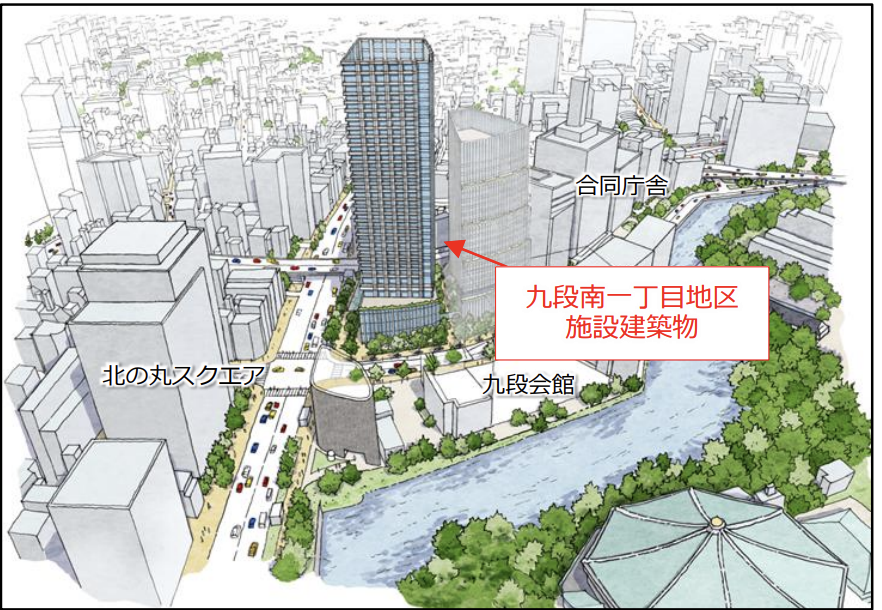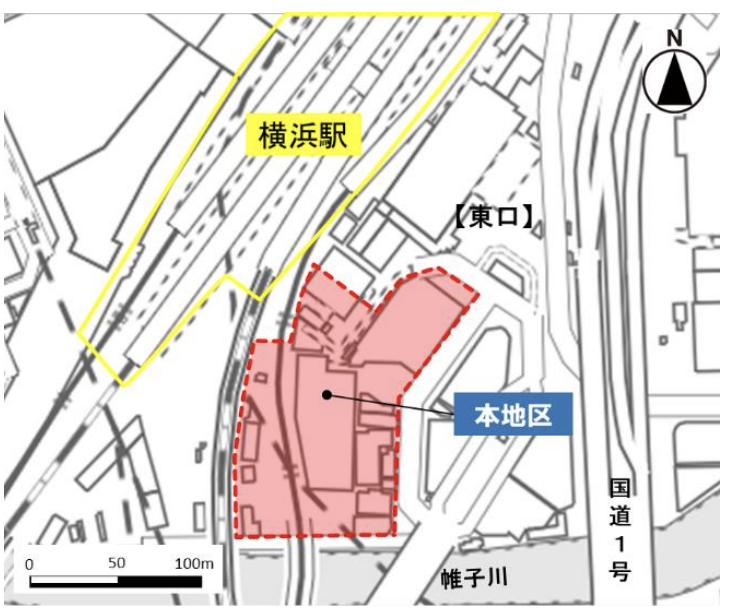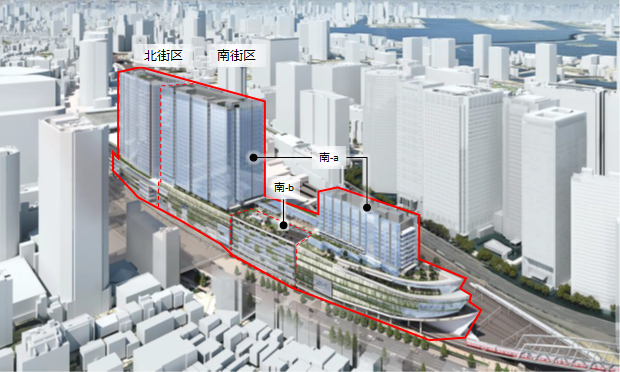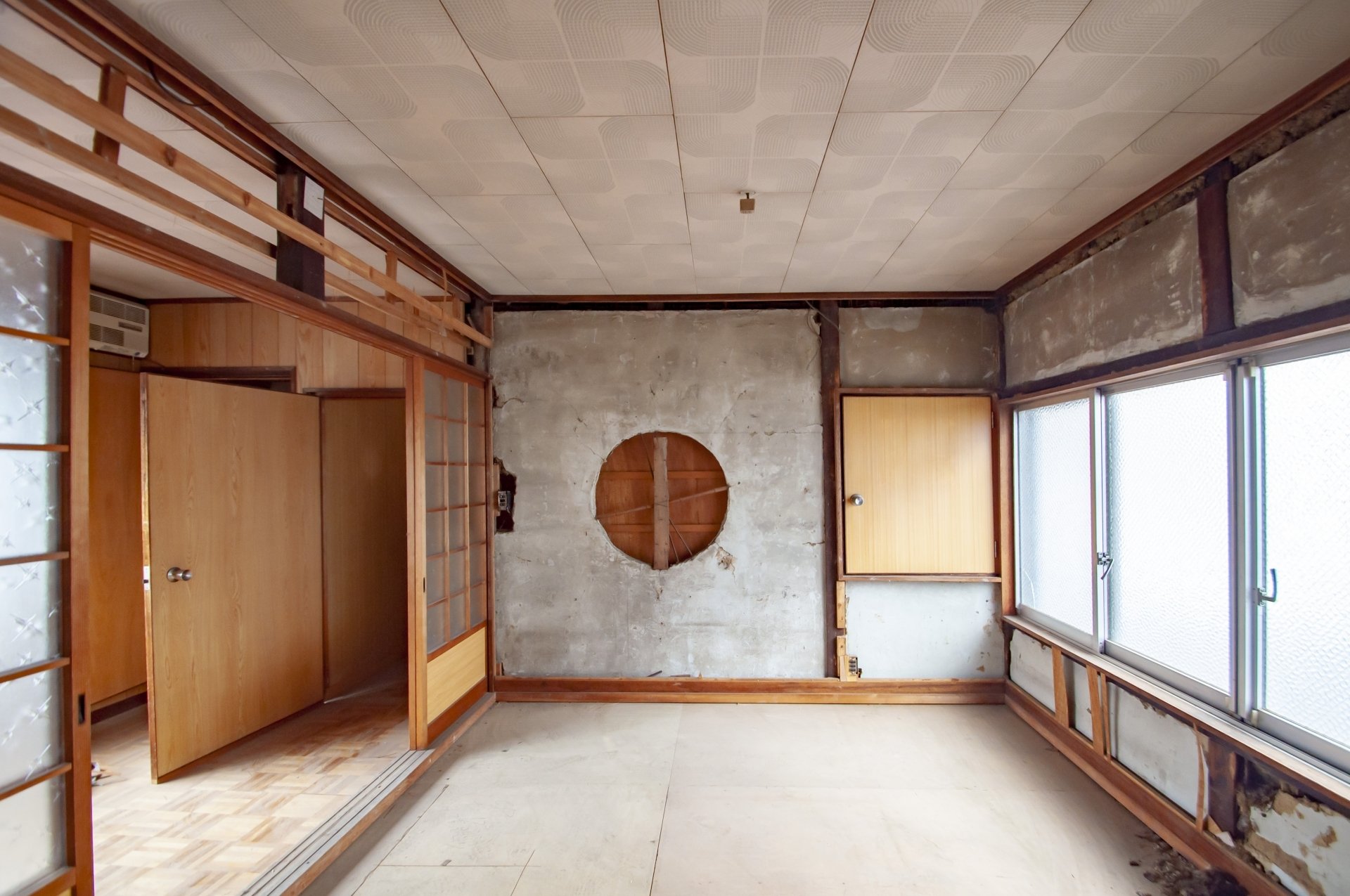When considering a real estate investment, you may encounter properties that do not have a building plan summary. For investors considering the purchase of such properties, the most common concern is whether or not they will be able to obtain bank financing.
The building plan summary is an important document submitted at the time of application for building permit, and is the basic document that financial institutions use to confirm the legal conformity of the property during the loan review process. Lack of this document can have a significant impact on the availability of financing.
In this article, based on our experience in numerous real estate transactions as INA & Associates, we will explain in detail the realities of real estate financing for properties without a building plan summary and specific solutions.
In real estate investment, obtaining appropriate financing is an important factor for a successful investment. Even if a property does not have a building plan summary, it is possible to obtain financing by understanding and implementing the appropriate measures. We provide practical information so that investors can proceed with their real estate investments with peace of mind.
What is a building plan summary?
A building plan summary is an important document that is submitted together with an application for building permit in accordance with the Building Standard Law. This document summarizes the basic plan of the building, and includes basic information such as the architect, designer, construction supervisor, and construction contractor, as well as an outline of the site and the building, to give an overall picture of the building plan.
The main information to be included in the building plan summary is as follows. First, the name and address of the architect will be included. Next, the architect's name, the name and address of the architect's office, and the type and registration number of the architect's license will be stated. The same information will be recorded for the construction supervisor, and for the contractor, the trade name or name, address, and construction license number of the contractor will be recorded.
Information on the site will include the location of the site, site area, building-to-land ratio, floor-area ratio, zoning, and other city planning restrictions in detail. For the building outline, basic building data such as use, structure, number of floors, building area, total floor area, and height will be included.
This building plan summary is a document that will be made available to the public after the building permit review is completed. In other words, this document must exist for all legally constructed buildings, and it must be kept by the administrative agency. However, in actual real estate transactions, this document may be unavailable or missing for various reasons.
During the real estate loan approval process, financial institutions strictly check the legal conformity of the property. The building plan summary is one of the most important pieces of evidence that proves that the property was constructed in compliance with the Building Standard Law. For financial institutions, confirming that the property is not illegally constructed is essential in order to properly assess the financing risk.
Without a building plan summary, financial institutions will have difficulty confirming the legal conformity of the property. This is a major negative factor in the loan screening process, and in some cases, the loan itself may be difficult to obtain. Especially for financial institutions that strictly screen properties, the lack of this document can be a fatal problem.
Impact on Financing without a Construction Plan Summary
The actual situation regarding bank financing for properties without a building plan summary varies greatly from financial institution to financial institution. However, in general, they will be evaluated very strictly in the loan approval process.
First, general financial institutions such as megabanks and regional banks often require the submission of a building plan summary as a prerequisite for financing. These financial institutions require the submission of a building plan summary (certificate of entry in the building permit application ledger) or an inspection certificate as documentation to confirm the legal compliance of the property. Failure to have these documents may result in suspension of the loan approval process.
Community-based financial institutions such as shinkin banks and credit unions may not be as strict as megabanks, but it is still common to be asked to submit alternative documents. Because these financial institutions understand local conditions, they may consider financing for properties that do not have a building plan summary if a suitable alternative is available.
Nonbank financial institutions may show more flexibility than banks, but they tend to charge higher interest rates. They also often have stricter loan terms and may require a higher percentage of personal funds.
The main reasons why financing a property without a building plan summary can be difficult are as follows.
First, it is difficult to verify legal compliance. Financial institutions must verify that the property to be financed complies with the Building Standard Law. Without a building plan summary, this verification process becomes extremely difficult. If a loan is provided for a property that is illegally constructed, the financial institution is forced to take a cautious approach because of the significant risk involved.
Second, it will be difficult to assess the collateral value. A property that may be illegally constructed may be subject to administrative guidance or a rebuilding order in the future. Financial institutions are hesitant to finance such properties because of the risk of a significant decline in collateral value.
Third, there is the risk at the time of sale. Properties without a building plan summary face the same problem when they are sold in the future. Since it is difficult to find a buyer and the sale price may decrease, the property is considered to be a high collection risk for financial institutions.
In the actual loan review process, financial institutions often take the following actions with regard to properties that do not have a building plan summary. First, they will ask for alternative documentation. If alternative documents are available, such as a certificate of ledger entries or a Building Standard Law compliance status investigation report, the lender may consider financing.
Second, we will tighten the loan conditions. Conditions may be added, such as an increase in the interest rate, a higher equity ratio, or the addition of a guarantor. In addition, shorter loan terms or reduced loan amounts may be considered.
In addition, additional collateral or guarantees may be required. Conditions may include offering other real estate as additional collateral or a guarantee from a credit guarantee association.
Alternatives and Solutions
It is possible to obtain real estate financing for a property without a building plan summary by taking appropriate alternative measures. This section details practical solutions.
Re-obtaining a building plan summary
The most basic solution is to re-obtain a building plan summary. The building plan summary is kept at the building guidance division of the municipality where the application for building permit was filed, and is a publicly available document.
The procedure for obtaining a building plan summary is relatively simple. First, inquire at the Building Guidance Section of the municipality that has jurisdiction over the location of the property. Many municipalities accept applications at the counter or by mail.
Documents required for application are an application form (form designated by the municipality), a copy of identification, and a fee (registered cash envelope or fixed-amount money order). The fee varies from municipality to municipality, but generally ranges from 100 yen to 500 yen. In the case of the Tokyo Metropolitan Government, viewing is free of charge, but obtaining a copy is not possible, so other alternatives should be considered.
The time from application to acquisition usually ranges from one to two weeks. However, if the property is old or the jurisdiction has changed due to municipal mergers, it may take longer to investigate.
In some cases, it may not be possible to obtain a building plan summary. In the case of an illegal building for which no application for building permit has been filed, of course, a building plan summary does not exist. Also, if the building is very old, there is a possibility that the documents are not kept. Furthermore, the documents may have been lost due to a disaster or other reasons.
Use of Certificate of Registered Matters
If a building plan summary cannot be obtained, an alternative is to use a ledger certificate. This document certifies the items listed in the building ledger maintained by the prefectural government.
The Certificate of Items Registered in the ledger includes the building permit number, date of confirmation, architect, designer, construction contractor, and outline of the building. Since it contains the same information as the building plan summary, it may be accepted as an alternative document by some financial institutions.
The procedure for obtaining this document is performed at the Building Guidance Division of the prefectural government or at a branch office of the prefectural government. Documents required for application are an application form, ID card, and fee. The fee varies from prefecture to prefecture, but generally amounts to several hundred yen.
However, the scope of requests for inspection and copying of the certificate of ledger entries differs from prefecture to prefecture. Some prefectures restrict requests to non-interested parties. It is important to check with the prefecture with jurisdiction in advance.
Conducting a Building Standard Law Compliance Status Investigation
If you are unable to obtain a building plan summary or ledger entry certificate, or if the financial institution does not accept these alternative documents, an effective solution is to conduct a Building Standard Law Conformity Survey.
The Building Standard Law Conformity Survey is a survey conducted in accordance with the "Guidelines for Survey of Existing Buildings" established by the Ministry of Land, Infrastructure, Transport and Tourism. In this survey, an architect will conduct a detailed investigation of the current status of the existing building to confirm its conformity to the Building Standard Law.
The survey covers a wide range of topics. First, basic information such as the use, structure, and scale of the building is confirmed. Next, we conduct a detailed investigation of the building's compliance with each provision of the Building Standard Law. Specifically, we check for compliance with the current Building Standard Law with respect to structural safety, fire prevention, evacuation safety, sanitary environment, barrier-free access, and other items.
If the survey results confirm that the property complies with the Building Standard Law, a "Building Standard Law Compliance Status Survey Report" is issued. This report is an important document that certifies the legal compliance of the property to financial institutions.
The survey can be conducted by a designated inspection agency or an architect belonging to an architect's office. When selecting an organization to conduct the survey, it is important to confirm in advance that the organization is recognized by the financial institution.
Other Alternative Documents
In addition to the primary alternatives listed above, there are other documents that can be utilized depending on the situation.
If an inspection certificate is available, this is the most promising alternative document. The inspection certificate certifies that the building has passed the completion inspection and is important evidence of compliance with the Building Standard Law.
It may be used as an alternative document even if a building permit certificate is available. However, some financial institutions may require additional documentation since the building permit indicates approval before construction begins and does not guarantee conformity after completion.
In the case of an existing nonconforming building, the "Existing Nonconforming Building Investigation Report" can be prepared to prove that the building was in compliance with the laws and regulations at the time of construction, even if some parts do not conform to the current laws.
Details of Costs and Procedures
The various procedures to achieve financing for a property without a building plan summary require different costs and timeframes. The table below compares the details of the main procedures.
| Procedure | Cost | Duration | Where to obtain | Remarks |
|---|---|---|---|---|
| Building plan summary | 100 to 500 yen | 1 to 2 weeks | Municipal Building Guidance Section | Most basic alternative |
| Certificate of ledger entries | Several hundred yen | 1 to 2 weeks | Building Guidance Division of Prefectural Government | Limited by prefecture |
| Building Standard Law Compliance Status Investigation | 200,000 - 500,000 yen | 1 to 2 months | Designated verification inspection agency | Most reliable alternative |
| Existing non-conformity survey | 100,000 - 300,000 yen | 2 to 4 weeks | Architect's office | For Existing Nonconforming Properties |
The cost of a building code compliance status survey varies widely depending on the size, structure, and use of the building. For a typical residence, the cost is approximately 200,000 to 300,000 yen, but for a large-scale building or a building with a complicated structure, the cost may exceed 500,000 yen.
Survey fees are broken down into documentary survey fees, on-site survey fees, and report preparation fees. In the documentary survey, existing drawings and documents are verified. In the field survey, an architect actually visits the site and conducts a detailed survey of the current status of the building. In the report preparation, a detailed report is prepared based on the survey results.
The survey period also varies depending on the size and complexity of the building. For a typical house, the survey can be completed in about one month, but for large buildings or those with special structures, it may take two months or more.
Some financial institutions may only accept reports by certain surveying agencies. It is important to check with the financial institution you are considering for financing in advance and select an acceptable survey agency.
If the survey reveals areas that do not comply with the Building Standard Law, corrective work may be required. Since the cost of corrective work will be required separately, it is wise to set aside a certain amount of budget before requesting a survey.
Negotiation Strategies with Financial Institutions
Proper negotiation with financial institutions is critical to successfully financing a property without a building plan summary. Here we present practical negotiation strategies.
First, advance preparation is extremely important. Prepare as many alternative documents as possible before talking to the financial institution. Attempt to obtain a building plan summary, and if you are unable to obtain one, clarify the reasons why. Detailed information about the property, purchase price, and investment plan should also be organized.
It is effective to consult with several financial institutions in parallel. By approaching financial institutions with different characteristics, such as megabanks, regional banks, shinkin banks, and non-banks, you can find the best financing terms.
During the consultation, it is important to explain the problems with the property honestly, rather than hiding them. We will organize and explain the reasons for the lack of a building plan outline, the status of alternative options being considered, and the property's attractiveness and investment value. This will demonstrate to the financial institution's staff that you are an honest and trustworthy borrower.
It is effective to propose alternative documents in stages. First, propose the submission of a building plan summary or certificate of items listed in the ledger, which are relatively easy to obtain. If these are not acceptable, we suggest that a Building Standard Law compliance status survey be conducted.
In negotiating loan terms, it is important to be flexible. Accepting conditions such as a higher interest rate, a higher equity ratio, or a shorter loan term can increase the likelihood of financing. However, compromises must be made to the extent that they do not impair investment profitability.
Conclusion
It is quite possible to obtain bank financing for a property without a building plan summary by taking the appropriate measures. The key is to accurately identify the problem and select the best solution.
The most basic solution is to re-obtain a building plan summary. In most cases, this can be obtained relatively easily at the building guidance section of the municipal office. The cost is inexpensive, at only a few hundred yen, so we recommend that you try this method first.
If you are unable to obtain a building plan summary, there are other alternatives such as a certificate of ledger entries or a Building Standard Law compliance status survey. The Building Standard Law Conformity Survey, in particular, is the most reliable solution, although it is expensive.
Obtaining proper financing is an important factor in the success of any real estate investment. Even if you encounter a property that does not have a building plan summary, it is important not to give up, but to consult with an expert to find the best solution.
INA&Associates K.K. can support your real estate investment with our extensive experience and expertise in such complex matters. If you are considering purchasing a property that does not have a building plan summary, please contact us. We will provide you with appropriate advice and concrete solutions.
Frequently Asked Questions
Q1:Should I avoid purchasing a property that does not have a building plan summary?
A1:It is not necessary to avoid. You can consider purchasing a property if you can clarify the reasons why it does not have a building plan summary and if there are appropriate alternatives. However, if there is a possibility of illegal construction, careful judgment is required. We recommend that a detailed investigation be conducted by a specialist to fully assess the risks before making a decision.
Q2:Who bears the cost of the Building Standard Law compliance status survey?
A2:Generally, the purchaser who receives the loan bears the cost. However, through negotiations with the seller, it is possible to have the seller bear some or all of the cost. This may take the form of an adjustment to the purchase price. It is important to clearly agree on the cost burden before signing the contract.
Q3:Do all financial institutions accept alternative documents?
A3:The response varies greatly depending on the financial institution. Megabanks are relatively strict and may not accept alternative documents. On the other hand, community-based financial institutions and non-banks may show flexibility. It is important to consult with multiple financial institutions to find the best lender.
Q4:What happens if nonconformities are found in the Building Standard Law Compliance Status Survey?
A4:If nonconformities are found, we will consider whether to perform corrective work or treat the property as existing nonconforming in its current state. In general, if the nonconformity is minor, corrective work will be performed, and if major renovations are required, the property will be treated as existing nonconforming. We will consult with financial institutions to determine the best course of action.
Q5:The older the property, the more likely it is that a building plan summary will not be found?
A5:That is correct. Especially for buildings built before the 1950s, the documents may be inadequately stored. Also, if the jurisdiction has changed due to municipal mergers, the whereabouts of documents may also be unknown. When purchasing an older property, it is important to confirm the existence of documents in advance.

Daisuke Inazawa
Representative Director of INA&Associates Inc. Based in Osaka, Tokyo, and Kanagawa, he is engaged in real estate sales, leasing, and management. He provides services based on his extensive experience in the real estate industry. Based on the philosophy that “human resources are a company's most important asset,” he places great importance on human resource development. He continues to take on the challenge of creating sustainable corporate value.

.png)













